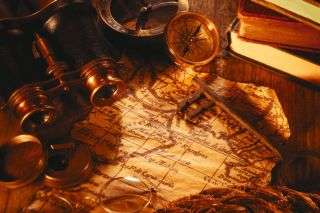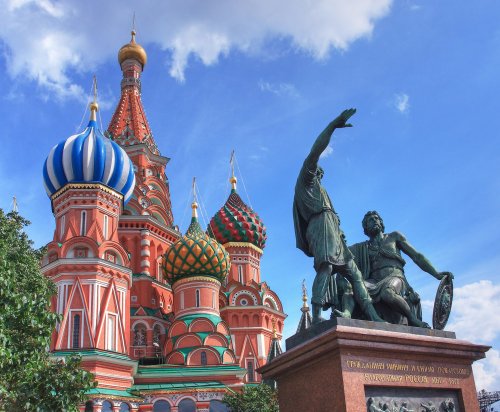
Queen Elizabeth I’s favourite explorer was driven mad searching for the mythic ‘Golden Empire,’ otherwise known as El Dorado.
Not many people have the distinction of putting a nonexistent place on the map, but Sir Walter Raleigh was one of them. That place was El Dorado, a legendary city of gold that was said to be located in what is now Venezuela.
But calling it a city is too precise. To the conquistadors searching for it, El Dorado was at different times a city, a kingdom or an empire; later, the search for it morphed into the search for a mine.
In the 1530s, when the phrase was first coined by the Spanish conquistadors, “El Dorado” was a man covered head to toe in gold dust — “the golden one” — and a participant in a tribal ritual of the Chibcha in the Colombian Andes. Since then, El Dorado has become a loose, seductive metaphor for the riches that might still lie undiscovered in the vast northern hinterlands of South America.
The name may forever be associated with Raleigh, the famous British explorer. And, arguably, without Raleigh’s own fame, El Dorado might have sunk into obscurity with other mythic golden cities such as Paititi, Cibola or Quivira, which the Europeans believed existed in the Americas. But Raleigh was by no means the first person to fall under the spell cast by the promise of unfound riches. In fact, by the time word of El Dorado reached him in the 1580s, Spanish explorers had already made several attempts to find it.
It was Raleigh, though, who ignited the story.
How Raleigh learned of El Dorado
Raleigh likely first learned of El Dorado in the early autumn of 1586, almost certainly from a Spanish conquistador named Don Pedro Sarmiento de Gamboa, who had been captured by Raleigh’s privateers in August of that year while returning home across the Atlantic. With 30 years of experience in the New World behind him, Sarmiento was a seasoned explorer.
Considering the two great Incan and Aztec empires that Spain had conquered some 70 years earlier, the idea of a third certainly wouldn’t have seemed absurd to Raleigh.
It may also have been from Sarmiento that Raleigh heard of Don Antonio de Berrio, another conquistador. Berrio believed he had reached the border of El Dorado in the Guiana Highlands on the upper reaches of the Orinoco river in an epic 18-month trek that concluded in 1585.
Berrio was in some senses Raleigh’s principal rival, and that rivalry embodies a key truth about El Dorado for Raleigh. It was, of course, always about the gold. But fighting over that gold with Spain sharpened its importance: If Raleigh found El Dorado, he would be bringing England a fortune that would rival the flood of American treasure on which Spanish power gorged. Without that wealth, as Raleigh later pungently said, Spain’s monarchy would be merely “kings of figs and oranges.”
The quest for an elusive prize
In 1594, Raleigh sent one of his men, Jacob Whiddon, on a reconnaissance mission to the coast around Trinidad and the Orinoco delta, which covers some 16,000 square miles (41,400 square kilometers). The following year, he raised the enormous sum of 60,000 pounds sterling (equivalent to over $13 million today) to finance the grand expedition to South America he was planning. The fleet was originally intended to be eight ships strong, but Raleigh was impatient and he left Plymouth with four ships and around 250 men on Feb. 6, 1595.
Raleigh’s ships made it to Trinidad, off the coast of South America, by March 22. On the evening of April 7, Raleigh’s men attacked the Spanish garrison at the island’s colonial capital, San José. This was a strategic necessity: Raleigh could not safely go upriver and leave his ships at the mercy of the enemy. But there was another goal, too: Raleigh had discovered that Berrio himself was in San José, and he wanted to talk.
“I gathered from him as much of Guiana as he knew,” Raleigh wrote in his book “The Discovery of Guiana” (published 1848). Berrio told Raleigh the story of a master of munitions named Juan Martínez, who Berrio said had lived in Manoa for seven months and gave the city its Spanish name, El Dorado.
Most of what we know happened next comes from Raleigh’s own account, “The Discovery of Guiana,” which he wrote on his return to England.
After meeting with Berrio, Raleigh took his men upriver with enough food for a month. Conditions and morale were dreadful: 100 men, five small, shallow, open-topped boats, torrential rains, intense heat and no real direction.
They were “driven to lie in the rain and weather in the open air — without shift, lying most sluttishly — in the burning sun, and upon the hard boards [of the boats, also used to] dress our meat …” Raleigh wrote. “I will undertake there was never any prison in England that could be found more unsavoury and loathsome.” If anything in his life demonstrated Raleigh’s leadership skills, it was this: All the men made it back to the coast alive.
They traveled some 250 miles (402 km) up the Orinoco to where it meets another great river, the Caroní — the site of Guayana City today. Here, at a native settlement named Morequito, Raleigh met Topiawari, an elderly tribal chief, or cacique. It seems that they became friends: Later travelers reported the chief’s disappointment that Raleigh did not return. Raleigh, for his part, described Topiawari as the “proudest and wisest” of his people, a man of “gravity and judgement [and] good discourse.” Raleigh understood Topiawari to say that the border of El Dorado was four days away, but Raleigh needed to return with more men and arms. It was as close as Raleigh ever came to realizing his dream.
By that time, it was the middle of June. Such was the force of the river that a journey that had taken them a month upriver took them a mere four days on the return. On the way back, they met another cacique named Putijma, who told them he knew of a great, gold-bearing hill that could be mined. But Raleigh and his crew returned to Britain empty-handed, with nothing more than the promise of wealth to come.
The prison years
Raleigh remained convinced that there were riches to be found in the South American region, his faith now fired in the crucible of experience. A mere four months after his return to London, he sent one of his most loyal men, Lawrence Keymis, to scout out the gold mine of which Putijma had spoken. But the Spanish had already established a fort-town named San Thomé at Morequito. Within a year, Raleigh sent another ship to explore the region south of the Orinoco, following intelligence from Keymis that they had been searching too far north for Manoa.
The last years of Queen Elizabeth I’s reign were not good ones for Raleigh, and the following years were worse. In the autumn of 1603, Raleigh was convicted of plotting the overthrow of James I, who had ascended the throne earlier that year. His sentence was suspended, but he would spend the next 12 years imprisoned in the Tower of London. Perhaps that sharpened the obsession, but Raleigh wasn’t alone in sharing it.
In March 1609, the young heir to the throne, Prince Henry, sponsored an expedition to the region under Robert Harcourt. At the end of that same year, Sir Thomas Roe led another expedition to the area. Raleigh was one of its sponsors, alongside Roe and the Earl of Southampton. It would be some 18 months before Roe returned, concluding that Manoa — the golden city of El Dorado — did not exist.
This seems not to have deterred Raleigh in the slightest. In 1616, James released him from the tower and authorized him to return to Guiana in search of a potential gold mine — a seam, specifically, that Raleigh had seen in the sandy rock close to what had become San Thomé. Raleigh had explicit instructions not to engage the Spanish military: James’ policy toward Spain was one of peace and rapprochement.
New gold dream
Raleigh sailed from Plymouth on June 12, 1617, with 14 ships under his command. With him were the redoubtable Lawrence Keymis and Raleigh’s 22-year-old son, Wat. Illness on the voyage across the Atlantic accounted for the lives of 42 men, including Raleigh’s second-in-command, John Pigott. Raleigh himself collapsed on the deck, hitting his head. He couldn’t eat solid food for 20 days or more. He survived, he said, on the occasional stewed prune.
By mid-November, when the fleet arrived off the coast of South America, it was apparent Raleigh was too ill to lead the expedition upriver, and Keymis took charge in his stead. Under him were five captains and five company commanders, among them Wat. The expedition consisted of some 400 men in total.
They started up the Orinoco on Dec. 10. Only three of the five ships survived the powerful currents and shoals of the delta, and they reached San Thomé on Jan. 2, 1618. Raleigh’s preparations for the expedition had been both thorough and prolonged; they had also been quite public. Keymis’ men were surprised by an ambush as the sun fell. The Spanish garrison was small — it comprised just 57 men, including a number of invalids.
Later — after midnight it was said, and certainly after much debate — the English explorers stormed the town. Wat Raleigh, captaining the pikemen, led the charge, and was felled by a musket ball in the throat. Four other Englishmen died in the taking of the town. Keymis had them all buried in the church there, Wat by the high altar.
Back at the coast, Raleigh knew nothing of this for a month. Then, on Jan. 31, he heard from a native source that two of the five captains had died in the fighting. Two weeks later, he received a letter from Keymis. “I never knew what sorrow meant till now,” Raleigh later wrote to his wife with the news.
Suicide mission
In San Thomé, Keymis — who must have known that by attacking the Spanish town he had breached the principal condition of Raleigh’s deal with James I — was falling apart, too. Only a few Spanish had died in the skirmish. Most had fled, and Keymis was fearful they would return upriver with reinforcements. Moreover, of course, he had no precise idea where the mine might be. Did he even believe there was one?
Keymis dithered and stalled, losing all respect from those who served under him. Eventually, three small craft were sent upriver from San Thomé. Some reports said the men in this new expedition went as far as 300 miles into the interior. They took enough food for four days but were gone three weeks, finding no information about the location of either a new mine or an existing one.
They returned to San Thomé and found it subject to increasingly successful guerrilla raids. After 29 days of occupation, the English left the town, and the Spanish burned it to the ground.
The remnants of Keymis’ party met with Raleigh on the coast on March 2. Keymis begged Raleigh’s forgiveness. “Seeing my son was lost, I cared not,” Raleigh told him. “[He] had undone me by his obstinacy, and I would not favour or colour in any sort his former folly.”
Keymis returned to his cabin and drove a knife through his own heart. After he returned to England in his remaining ships, Raleigh was imprisoned and executed in November of the same year. James I used the breach of his promise to keep peace with the Spanish as an excuse to revive the treason charge. Raleigh died for many reasons; the failure of his search for gold was only the last of them.
What then, are we to make of that search, which cost Raleigh so much? There seems little doubt that his initial faith in the existence of El Dorado was real enough. But what about after he decided to turn back in June 1585? That is the point, after all, when talk of a mine first appeared as Raleigh and his men raced downriver. Was he deluding himself as well as those around him? Was his inability to reach El Dorado — the vastness of that humiliation — simply too great to countenance?
We don’t know. We are still, in a sense, in the grip of Raleigh’s imagination even now, absorbed in the epic scale of his failure after 400 years, asking ourselves the same questions his contemporaries asked, about the intensity of Raleigh’s obsession and the integrity of his dream.
Additional resources:
Sourse: www.livescience.com





